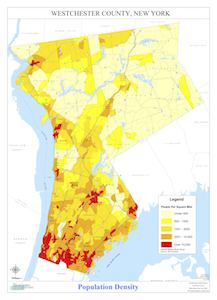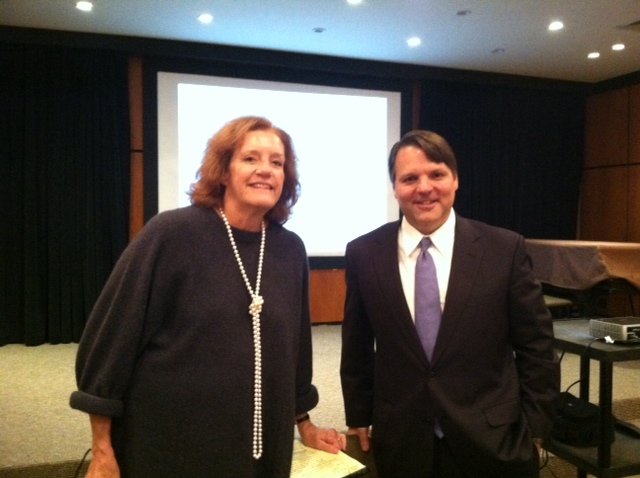County Taxes -- A Look Behind the Numbers
- Thursday, 05 January 2012 12:20
- Last Updated: Thursday, 05 January 2012 12:47
- Published: Thursday, 05 January 2012 12:20
- Hits: 5039
 The Westchester County Budget office has released an estimate of the tax levy for 2012 including a breakdown of the increases and decreases on the levy for all of the cities and towns in Westchester. Though the total levy remains at the 2011 level of $548 mm dollars, the levy on the various cities and towns has increased or decreased based on assessed value. Scarsdale residents will see an estimated 3.24% increase in their county taxes and the rate in Greenburgh will go up by 2.54%, while the rate in White Plains will decrease by 4.94%. How are these rates derived? The answer is complex and in order to fully understand the calculations we questioned Westchester County Budget Director Lawrence Soule who provided the following explanation:
The Westchester County Budget office has released an estimate of the tax levy for 2012 including a breakdown of the increases and decreases on the levy for all of the cities and towns in Westchester. Though the total levy remains at the 2011 level of $548 mm dollars, the levy on the various cities and towns has increased or decreased based on assessed value. Scarsdale residents will see an estimated 3.24% increase in their county taxes and the rate in Greenburgh will go up by 2.54%, while the rate in White Plains will decrease by 4.94%. How are these rates derived? The answer is complex and in order to fully understand the calculations we questioned Westchester County Budget Director Lawrence Soule who provided the following explanation:
Why will Scarsdale and Greenburgh residents receive the increase while White Plains taxes will go down?
In New York State, the property assessment and taxation process is more complicated than other states that have a uniform assessment process. There are several steps to the NYS process:
1) Each municipality conducts their own assessments, and could assess their real property very differently than another municipality. Assessors are allowed to use one of three methods: (1) Market (2) Cost or (3) Income. Once the “market value” is established by one of these three assessment methods, a municipality may decide to assess property at a percentage of the “market value.”
2) Due to the fact that each municipality assesses at a different percentage of the estimated market value, the Office of Real Property Services (ORPS) at the NYS Department of Taxation and Finance develops an “Equalization Rate” for each municipality. This rate attempts brings all assessments to an “Equalized Full Value.” If all municipalities assessed property at 100% of market value, equalization rates would not be necessary.
3) Each municipality is levied their share of the County Tax Levy based on their pro rata share of the Equalized Full Value of all property in the County.
4) Once each municipality knows how much it owes the County, it divides this levy amount by its total assessed value (not equalized full value) in order to calculate its County Tax Rate.
In response to your specific question, White Plains’ Equalized Full Value decreased by approximately $1 billion, meaning

Because Scarsdale and Greenburgh’s Equalized Full Value fell proportionately less than White Plains’, their share of the County Tax Levy increases while White Plains’ falls.
Does this indicate that property values in Scarsdale have leveled off or increased while other areas have seen real estate values fall?
While the above statement may be true you cannot necessarily draw this conclusion from the year-over-year change in the tax rate. As stated above, there are many factors that affect the assessment and equalization rates that can differ across municipalities. The Equalized Full Value represents the estimated market value of all real property in a municipality at a given point in time. The Equalization Rate is a tool used to compare assessments across municipalities in an attempt to allocate the County Tax Levy equitably. The equalization rate does not correct for all inequities in the assessment process across municipalities. You can find more information on the how the equalization rate is determined at the following link: http://www.tax.ny.gov/pit/property/learn/eqrates.htm
Is Westchester County bound by the NYS 2% tax cap? If not, why?
Yes, Westchester County is bound by the 2% Property Tax Cap. However, it is important to note that the 2% Cap applies to the aggregate Tax Levy assessed by the county on all municipalities within the County. The County does not determine the tax rates for individual municipalities. In 2011 the County tax levy was reduced by 2% from the prior year and in 2012 it was held flat to 2011’s amount of $548m. Despite this fact, some municipalities, such as Scarsdale and Greenburgh, as you noted, experienced increases while others, such as White Plains, had a decrease in their rate. This is largely the result of the New York state equalization and assessment process.
The Westchester County Board of Legislators restored some of the recommended funding cuts for day care, health centers, ArtsWestchester, the Greenburgh Nature Center, the Cornell Cooperative Extension, and the Westchester County Board of Elections. How has this impacted the budget?
These additions to spending do put pressure on the County finances for 2012. There are a number of uncertainties such as sales tax collections and potential reductions in State and Federal Aid that could also put pressure on the County’s finances. The Department of Budget will continue to monitor expenditures and revenues throughout the year to ensure that the County is able to stay within the appropriations adopted by the Board of Legislators and the County Executive.